Missouri Goes To War

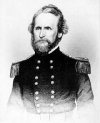 |
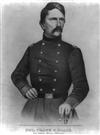 |
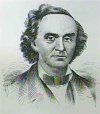 |
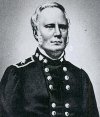 |
Now that Brigadier-General Nathaniel Lyon was in command, Missouri Governor Claiborne Fox Jackson decided that a meeting was needed between them. After receiving a letter of safe conduct, Governor Jackson, accompanied by Major-General Sterling Price and Colonel Thomas L. Snead, arrived at the Planters House in St. Louis on June 10, 1861. Brigadier-General Nathaniel Lyon, accompanied by Colonel Frank P. Blair and Major Horace A. Conant, arrived at the Planters House Hotel to meet with the state officials. Jackson offered a compromise to the heightened tensions throughout the state. He offered to maintain strict neutrality within the state, disband the Missouri State Guard and discontinue additional militia musters. All Jackson wanted in return was for Lyon to do the same with the Home Guard. Lyon would have none of it. After four hours of debate, Lyon stood up and made the following declaration: [21]
“Rather than concede to the State of Missouri the right to demand that my government shall not enlist troops within her limits, or bring troops into the State whenever it pleases, or move troops at its own will into, out of, or through the State; rather than concede to the State of Missouri for one single instant the right to dictate to my government in any matter, however unimportant, I would see you, and you, and you, and you, [pointing to each man in the room] and every man, woman, and child in the State dead and buried. This means war. In an hour one of my officers will call for you and conduct you out of my lines.”
Jackson, Price and Snead did not wait for Lyon's officers, but hurried to the Pacific Railroad depot and commandeered a train to take them to Jefferson City. They arrived there around 2:00 A.M. on June 12th. Along the way Jackson and Snead worked on a proclamation to be issued when they arrived in Jefferson City. Price also sent orders to burn the railroad bridges over the Gasconade and Osage Rivers behind them. Price also ensured the telegraph wires were cut. On June 12th, Snead issued the proclamation while Jackson directed the evacuation of the state government from Jefferson City. In conjunction with the Governor's proclamation, Major General Sterling Price issued orders to each military district commander of the Missouri State Guard to assemble their forces and have them ready for service. Price had convinced Jackson that Jefferson City was lost and their first line of defense should be in Boonville, Missouri, about 50 miles upriver. [22]
Both Price and Jackson were loathe to give up the Missouri River because it would cut off the flow of volunteers from northern Missouri. Union control of the Missouri River would be disastrous for the Southern cause. They had conceived the following plan for the defense of Missouri: [23]
- Governor Jackson had previously ordered the State's quartermaster-general to move the State's armory and workshop from Jefferson City upiver to Boonville, Missouri.
- They planned to make a stand at Boonville with the intention using the extra time to assemble the Missouri State Guard and establish fortifications at Lexington, Missouri.
- They wanted to hold onto the western counties of Missouri until help arrived from the Confederacy.
Lyon and Blair had also been working on a plan to defeat the Missouri State Guard and keep Missouri in the Union. Immediately after the breakup of the meeting at the Planters House Hotel, Lyon met with his staff to begin executing that plan. The plan had two main components: [24]
- 1. Send a column of troops into southwestern Missouri to prevent war supplies or Confederate troops in Arkansas from entering Missouri. This force would also prevent the Missouri State Guard from joining up with the Confederate forces.
- 1. The second movement was to take a force up the Missouri River and capture the major cities of Missouri thus being able to control all the traffic on the Missouri River.
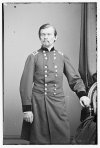
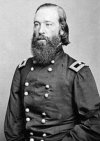
Brigadier-General Nathaniel Lyon ordered the regiments of Colonels Sigel, Salomon, and Gratz to proceed to Springfield, Missouri. They began heading by rail to Rolla on June 13th and had all left by June 15th. Sent along with them were two batteries (six guns) commanded by Major Franz Backoff. In command of this expedition was Captain Thomas W. Sweeny, recently appointed Brigadier-General. On Thursday, June 13th, Lyon boarded his men, about 2,000 in all, onto steamboats (the Iatan, the City of Louisiana, the A. McDowell, and the J. C. Swan) to head up the Missouri River from St. Louis to Jefferson City, Missouri. With him he had a battery of guns under the command of Captain James Totten. [25]
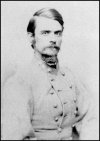
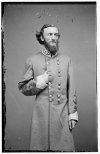
Lyon's rapid movements caught Major-General Sterling Price by surprise. Governor Jackson and Price arrived in Boonville on June 13th and found only a few hundred Missouri State Guard troops, untrained and armed only with shotguns and squirrel rifles. Many were not armed at all. They were under the command of Brigadier General John B. Clark, Jr. The largest regiment was commanded by Colonel John S. Marmaduke who had recently graduated from West Point. They were settled in Camp Bacon, about four miles east of Boonville. Without any artillery present, Price realized that the best they could do at Boonville was to put up a delaying action. Price needed some time to organize the Missouri State Guard and make its stand at Lexington, Missouri. At this time, Price became ill with a serious case of dysentery and left to convalesce at his home in Keytesville, Missouri. He left instructions for the State troops to hold Boonville as long as possible, before withdrawing southwest. [26]
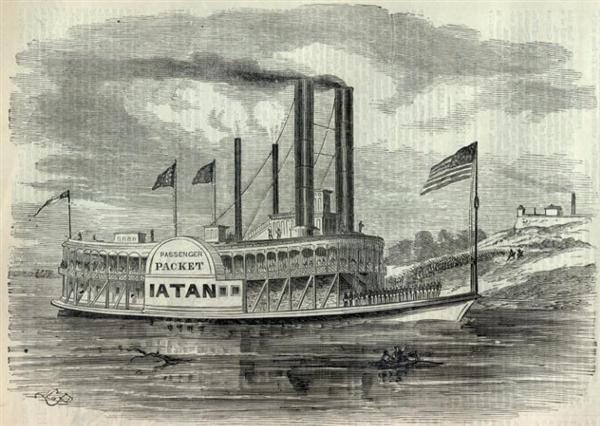
Lyon's forces arrived in Jefferson City around 2:00 P.M. on June 15th and tied up to the wharf near the State Capitol. Lyon discovered that Jackson and Price had fled about 50 miles upriver to Boonville. Lyon disembarked some of his forces to occupy Jefferson City and rebuild the Gasconade River bridge. Here Lyon received information from a Boonville Unionist that the State Guard was building fortifications at Boonville. He also relayed the information that reinforcements were on their way from Tipton. Lyon would waste no time. He decided to leave a small force to occupy Jefferson City and head upriver to Boonville with the remaining 1,700 men. He rested his troops that night, but set out upriver for Boonville on Sunday, June 16th. [27]
